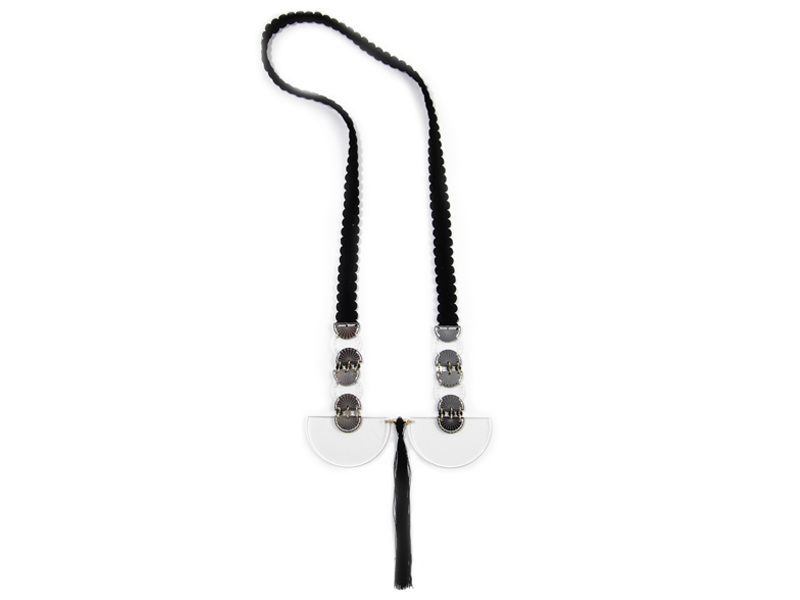
With a PhD in design and innovation, Chiara Scarpitti is an artist who combines anthropological research with digital manufacturing in thought-provoking jewelry. She thinks of herself as a designer who specializes in contemporary jewelry and hybridizes technology with a humanistic approach, bringing together advanced industry and high craft. Her recent show at OHMYBLUE gave us a chance to interview her about her exhibit, Ushabti.
Olivia Shih: When were you first drawn to jewelry, and why choose jewelry as creative expression?
Chiara Scarpitti: I began when I was very young, 16 years old. I had started with other materials, like leather, glass, and ceramic, and was making abstract compositions of shapes and volumes. Both my parents are architects, so maybe for this reason I have always paid strong attention to the composition of things and to the beauty of the geometry. I didn’t exactly choose jewelry as creative expression; it’s more like jewelry as medium has chosen me. I’m very attracted to objects, and I like the idea of empowering the body through wearing. Jewelry makes this double strengthening possible.
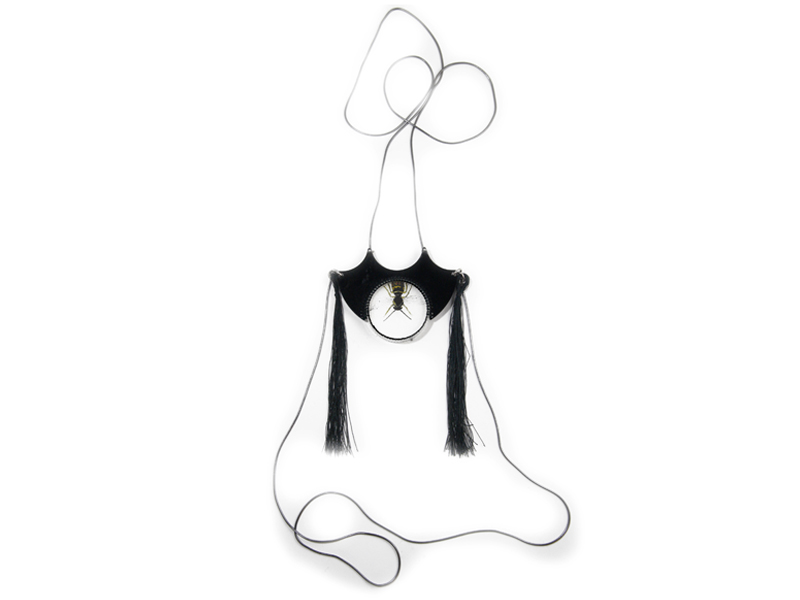
You have a bachelor’s in industrial design, a master’s in fashion design, and a PhD in postdigital design. With all that academic training, what led you to make jewelry?
Chiara Scarpitti: This is a good question! I probably felt deeply inside me the necessity to compose things. I’m not interested in the idea of the market, the selling phase and so on, but I’m very addicted to the composition and conceptual process that are behind the project. My interests are very varied … but there has always been a “literary” part, which is more academic and fights every day with the designing part, which is more expressive and far from any construction.
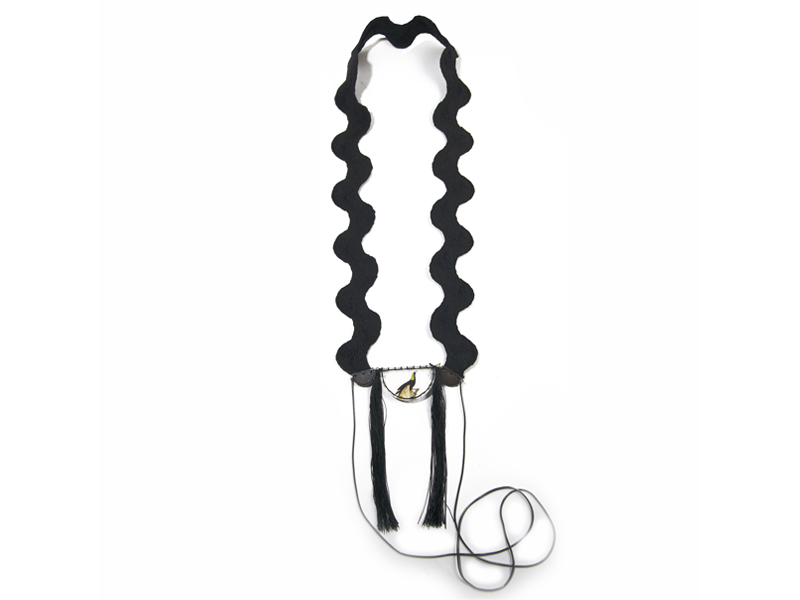
Ushabti, the title of your show, is an Egyptian word that means “those who answer.” It refers to the small, magical statues that followed the deceased into the afterlife and provided protection. Why choose this word to represent your jewelry collection?
Chiara Scarpitti: I’m very fascinated with these ancient little objects from Egyptian culture. These ushabti statues are so powerful, although they have no apparent function. I deeply believe in the power of useless things. Do these objects give a real sense to our lives? Probably, and through their presence, they ask us or give us messages.
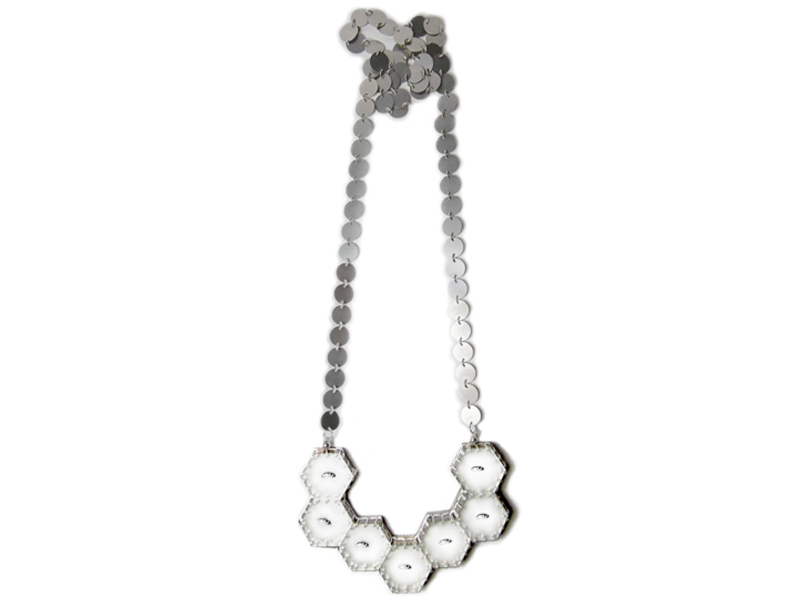
Your work is often based on in-depth research into history and anthropology. Each visual fragment and piece of trim traces back to a source in real life. Could you share your work process for one of the pieces in this exhibition?
Chiara Scarpitti: At first there is the writing process, the image collecting, and then the selection. In the second phase, there is the drawing of the shapes through different processes, like acid-cutting with the steel and laser-cutting the Plexiglas. Later, through the shapes, I digitally redesign the pictures that I have chosen for the collection, and I print them on silk through another kind of digital process, which can be long and accurate. Once I have all the meta-pieces in my lab, in general for two to three months, I compose them, thanks to artisanal and goldsmithing techniques. Some pieces are also born in unexpected ways, and I like this limit of the entire process because it gives some possibilities to the unforeseen.
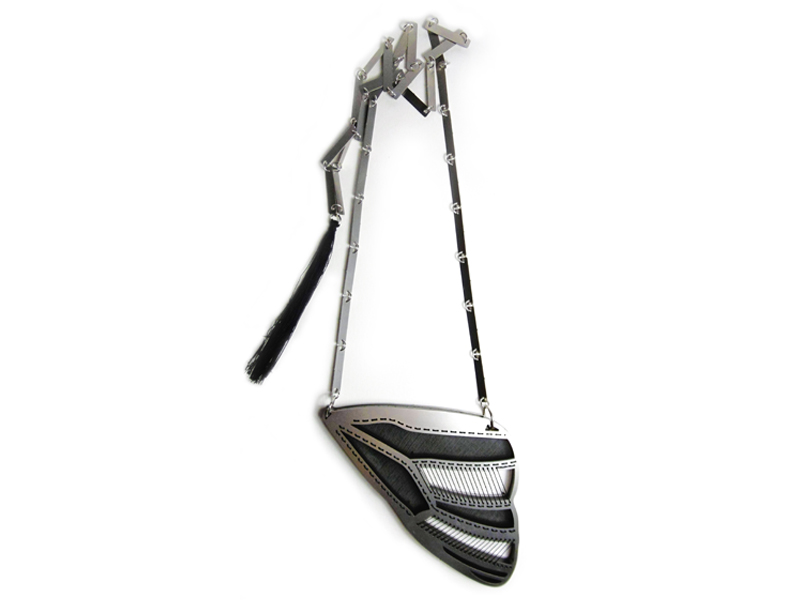
Your jewelry collection, Ushabti, stands at the complex crossroads of design, craft, art, technology, the humanities, and the sciences. Could you talk a little more about the “practice of design understood as critical making,” which you did your PhD research on? How do these piece embody that?
Chiara Scarpitti: These pieces don’t belong properly to my PhD research. For sure, I’ve been influenced by the anthropological part and by some research about the body, but with my PhD research, I haven’t yet had the time to express it in a material path. Definitely, in 2016, my aim is to realize concretely some points of my doctoral research, which are concerned more with the hybridization between the biological world and the objects, through a digital production process strongly oriented to the human being. It’s very complex to explain now, but for sure this will be the subject of my future design research, also for jewelry.
Could you describe what you do in a regular workday?
Chiara Scarpitti: I hate getting up very early in the morning, even if I’m obliged to do it. Anyway, every day is different because some days I go to work to the university, other days I work in my own studio, which I deeply love. Frequently I travel for work to Milan or other cities. I love to go to sleep very late and enjoy a long breakfast, but I work every day. If you decide to work in this field it’s very difficult to separate the life and the job.
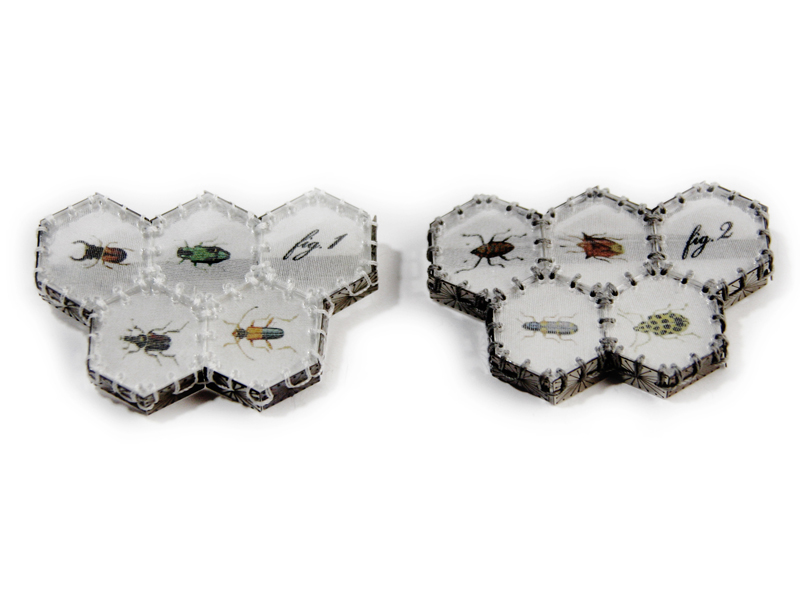
What do you think are possible pitfalls of designing or making contemporary jewelry?
Chiara Scarpitti: This field is really full of pitfalls. Most people don’t understand the culture of contemporary jewelry, others don’t understand the production processes, the meaning of the pieces, or the complex aesthetic. Moreover, many artisanal bijoux are mixed with contemporary jewelry … there is a lot of confusion and misunderstanding about this field!
Where do you think contemporary jewelry is headed next?
Chiara Scarpitti: I think that contemporary jewelry, just as the design object, will always head toward a mature vision of mankind; digital but at the same time aware of humanity’s own organic and imperfect natural status. Synaesthetic objects, like jewelry, will assume the critical role of facing contemporary social and cultural issues. Their conception becomes a political choice and generates new expressive possibilities. I strongly believe in the power of the jewelry piece, conveyed by the quality of the craftsmanship and the technique, which aim at a deep philosophical message.

Have you heard, seen, or read anything of interest lately?
Chiara Scarpitti: Yes, I have seen a place in Venice where I met incredible and sensitive contemporary jewelry lovers. This meeting has filled me with joy! The place is the gallery OHMYBLUE, which hosted my solo exhibition this month. It’s been so beautiful to meet passionate young people and share reflections and considerations with them! The cooperation between people really gives a deep sense to my work and also to the entire contemporary jewelry world, which is yet so unexplored and unknown.
Thank you.
AJF has decided to begin posting the prices of pieces in the gallery shows we are highlighting each month. The works in this exhibition are priced between $150 and $900 US.





